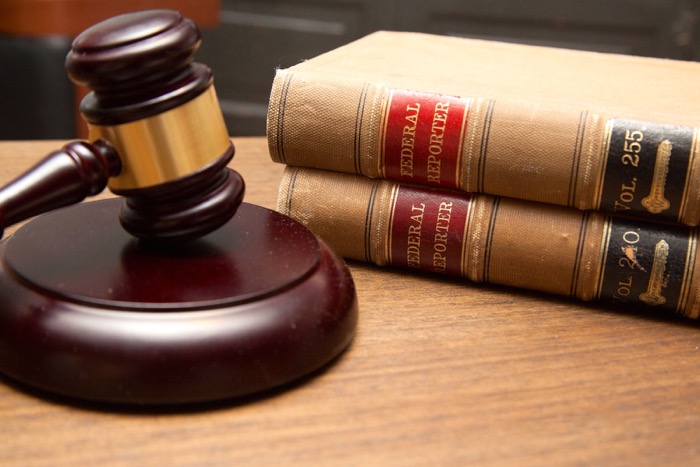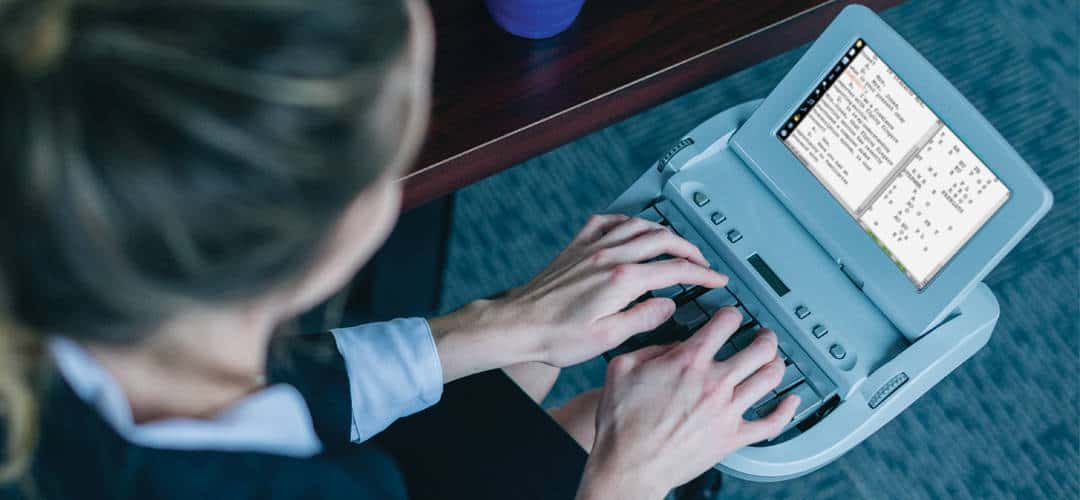Durham court reporting vs. digital recording: which is better?
Just How Court Reporting Works: A Step-by-Step Guide to the Legal Process
Court reporting is a vital part of the lawful system. It entails a structured procedure that assures precise documentation of procedures. From prep work to the final delivery of transcripts, each step is necessary. Understanding just how stenotype reporter operate deals understanding into the honesty of legal records. The nuances of their work can exceptionally affect legal end results, prompting concerns concerning the technologies and techniques they use. What are the particular strategies that define this career?
The Function of Court Reporters in the Legal System
Stenotype reporter play a necessary role in the legal system by providing accurate and reputable records of court procedures. Their job warranties that every talked word during depositions, hearings, and tests is documented, which is essential for preserving an official document of events. This transcription is fundamental for appeals, as it permits higher courts to examine the procedures and identify if any type of errors were made during the test.
Furthermore, stenotype reporter aid in protecting the stability of the legal process by creating verbatim records that can be referred to by lawyers, judges, and other events included in a situation. They typically make use of specialized devices and software program to catch dialogue with accuracy. Beyond the court, their transcripts can act as vital historic files, providing insight right into judicial process and the legal system's performance. Eventually, stenotype reporter add greatly to transparency and accountability in lawful issues.
Preparing for a Court Reporting Session
Preparation is vital for an effective court reporting session, as it assures the precision and performance of the transcription procedure. Stenotype reporter start by evaluating instance materials, including pleadings and witness lists, to acquaint themselves with the terms and context. They additionally make specific that they have the essential tools, such as steno machines, note pads, and back-up tools, ready for usage.
Before the session, interaction with lawful teams is essential. Press reporters usually clear up any type of certain demands pertaining to formatting or preferred terminology. In addition, they might prepare to consult with witnesses or lawyers to review the process and validate the timetable. Showing up early to establish up the equipment enables troubleshooting possible technological issues. In general, complete prep work not only improves the press reporter's self-confidence but also contributes significantly to producing a clear and accurate record of the lawful proceedings.

Capturing the Document: Techniques and Devices
Making use of sophisticated techniques and dependable tools, court press reporters thoroughly capture the spoken word throughout legal process. They use stenography, a method entailing a specialized machine that allows them to kind several noises concurrently, consequently recording dialogue in genuine time. This device, referred to as a steno keyboard, is furnished with tricks that stand for words and syllables, making it possible for swift and accurate input.
Along with stenography, stenotype reporter might use audio recording gadgets as extra devices. These devices serve as backups, making sure that no crucial details is shed during process. Furthermore, some reporters incorporate software that improves their transcription performance, offering features such as voice recognition and automated format.
Proper positioning and emphasis are critical; press reporters need to maintain interest on all speakers, recording subtleties and inflections that add to the document. With a mix of ability and technology, court reporters maintain the stability of the lawful procedure by making sure a specific and extensive record of events.
Recording the Proceedings
Recording the procedures needs court press reporters to transform spoken dialogue right into composed message with extraordinary accuracy and speed. This procedure commonly takes area promptly after the recording has actually been captured, utilizing specialized software application that permits seamless transcription. Stenotype reporter should pay attention attentively to the audio, ensuring that every inflection, word, and pause is accurately stood for in the records.
They typically depend on shorthand systems, personal transcription abilities, and advanced technology to promote this task. The setting in which they work can be busy and occasionally disorderly, as legal procedures usually involve several audio speakers and technological jargon. Court press reporters should additionally maintain focus to capture subtleties in tone and context that might be important for the lawful document. Ultimately, the precision of the transcription is essential, as it serves as a certification for future referral in legal process.
Modifying the transcript and examining
The process of reviewing and editing and enhancing the records is important for making certain accuracy in court reporting. Stenotype reporter often work together with lawyers to clear up any kind of obscurities and verify the correctness of the videotaped declarations. This partnership is essential for preserving the integrity of the lawful document.
Significance of Accuracy
Accuracy functions as the keystone of efficient court reporting, as also minor mistakes can substantially alter the definition of lawful procedures. The evaluating and modifying procedure is critical in making certain that transcripts show the spoken word with fidelity. Stenotype reporter meticulously confirm names, technological terms, and legal jargon to keep next page accuracy. This attention to detail helps protect against misconceptions that could influence case results. Additionally, accuracy cultivates trust among attorneys, customers, and the court, enhancing the honesty of the judicial system. Mistakes can lead to appeals or conflicts, making it crucial for reporters to improve their work completely. Inevitably, the pursuit of accuracy not only improves the integrity of the transcript but also promotes the requirements of the legal career.
Cooperation With Lawyers
Collaboration in between court press reporters and attorneys is important throughout the reviewing and modifying stage of records manufacturing. This procedure guarantees that the last paper properly reflects the spoken word and sticks to legal standards. Attorneys frequently review records for details terminology, context, and any type of potential errors that can impact the instance. Court press reporters rely upon best site attorneys' experience to clear up uncertain sections or emphasize critical declarations. Efficient interaction is crucial; attorneys might supply comments or request corrections, which court reporters have to address quickly. This partnership not only enhances the high quality of the transcript but also adds to a smoother legal procedure. Inevitably, collective efforts lead to a dependable and accurate document, important for lawful proceedings and future recommendations.
Supplying the Final Records to Customers
Upon completion of the transcription process, stenotype reporter diligently prepare the last paper for shipment to their clients. This final records goes through complete checking to guarantee accuracy, as any kind of mistakes might considerably impact legal proceedings. Stenotype reporter format the record according to the certain needs stated by the customers or legal firms, including pagination, indexing, and any necessary exhibitions.

Court reporters might supply a cover letter summing up key details and offering further help if required. This complete strategy warranties that customers receive a sleek, precise, and easily accessible records, crucial for their legal requirements.
Frequently Asked Inquiries
What Certifications Are Required to Become a Court Reporter?
To come to be a stenotype reporter, people typically require a secondary school diploma, conclusion of a court reporting program, and accreditation or licensure, relying on state requirements. durham court reporting. Efficiency in shorthand and technology is also necessary for success
For how long Does It Require To Total Court Reporting Training?
Normally, completing court reporting training takes between 18 months to four years, depending upon the program's intensity, the pupil's pace, and the details requirements of the jurisdiction in which they wish to practice.

What Is the Ordinary Income of a Court Reporter?
The typical wage of a stenotype reporter varies by this location and experience, usually ranging from $45,000 to $100,000 each year (durham court reporting). Variables such as field of expertise and need can significantly influence their profits in various regions
Are Court Reporters Required to Have Accreditation?
Stenotype reporter are normally needed to acquire accreditation, which assures they possess the required abilities and knowledge for accurate transcription. Qualification needs can differ by state or territory, reflecting professional criteria within the lawful community.
Can Court Reporters Job Remotely or Freelance?
Stenotype reporter can function remotely or freelance, supplying versatility in their profession. Several make use of innovation to transcribe procedures from different locations, permitting for varied chances in the lawful area while keeping a work-life equilibrium.
Court reporters play an important duty in the legal system by offering dependable and accurate transcripts of court procedures. In addition, court reporters assist in protecting the honesty of the legal procedure by creating verbatim records that can be referred to by lawyers, judges, and various other parties entailed in a case. Making use of sophisticated strategies and trusted equipment, court press reporters diligently capture the talked word throughout lawful process. Court press reporters should additionally maintain focus to catch subtleties in tone and context that might be essential for the legal document. To end up being a court press reporter, individuals commonly require a high school diploma, conclusion of a court reporting program, and qualification or licensure, depending on state demands.